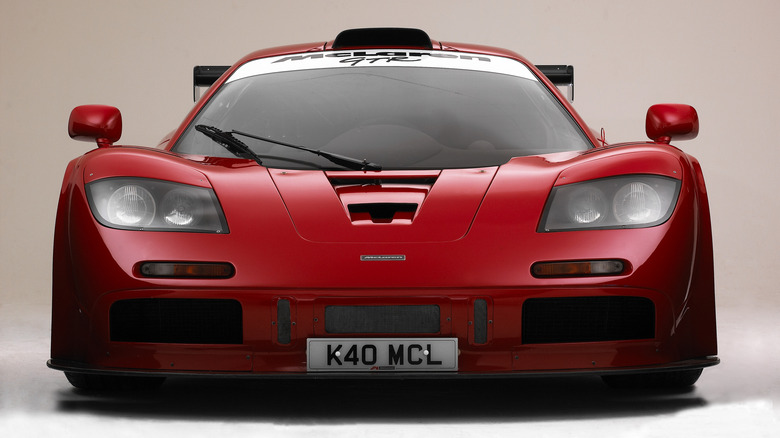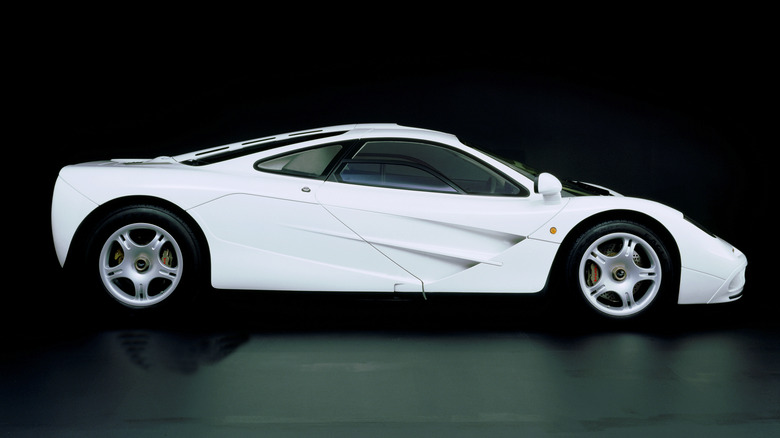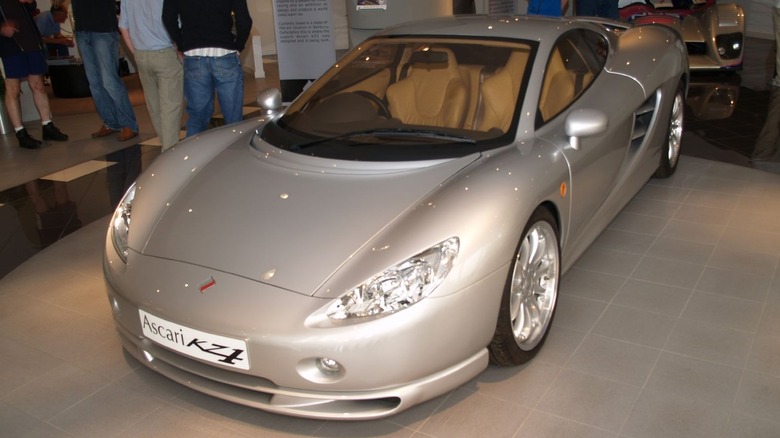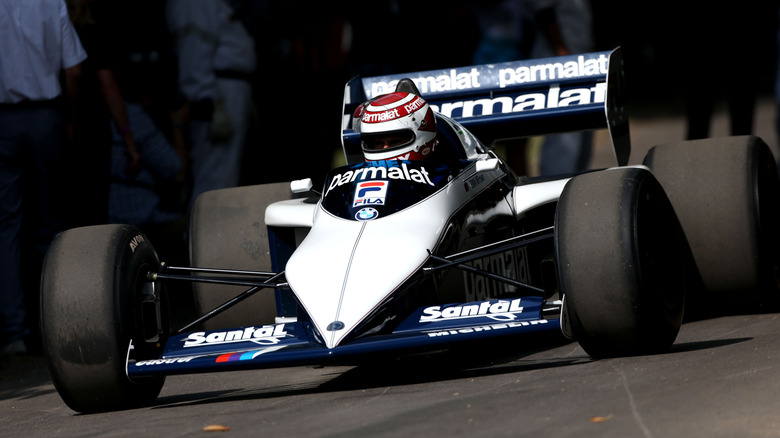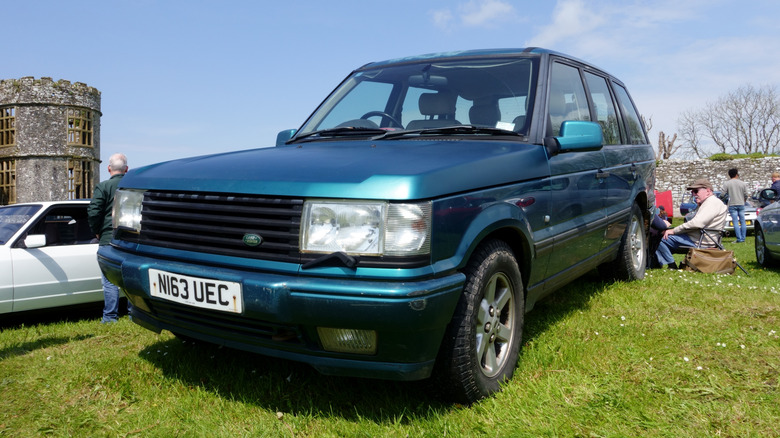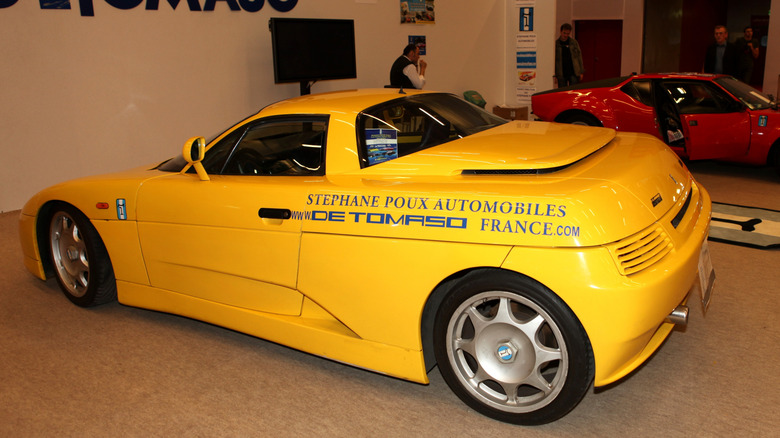5 Non-BMW Cars Powered By BMW Engines
Fun fact – BMW began building engines over a decade before its first car rolled off of the assembly line. With over a century of internal combustion experience, it's fair to say that BMW is one of the most seasoned and trusted engine manufacturers in the world, despite a few missteps along the way. It is a legacy that very few car manufacturers can claim and a very valuable one from a business standpoint. Leveraging that experience, BMW has loaned out some of its famed powerhouses to other manufacturers that don't have the same faculties to be able to produce engines of the same caliber.
BMW loaner engines have ranged from piddly four-cylinder turbodiesels to screaming naturally aspirated V12s and have been used in cars ranging from luxury SUVs to championship-winning Formula One machines. BMW's powertrain diversity cannot be denied. While it is impossible to say what the legacies of the McLaren F1, Brabham BT52, or Range Rover P38 would have been without Bavarian power under the hood, it is likely that one or two of them wouldn't have achieved icon status without BMW.
McLaren F1
In the summer of 1988, four heads of the McLaren Formula 1 team waited at the Milan Airport for a delayed flight. Instead of flipping through a magazine from the duty-free, they collectively began the process of designing the world's finest road car at the airport bar. That evening began a four-year process of detailed obsession, culminating in exactly what the group set out to accomplish. The McLaren F1 arrived in 1992 as the company's first supercar and unquestionably the best in the world at the time.
While the logistics of the F1 were a joint effort, the bulk of the praise can be attributed to notoriously detail-obsessed Formula One designer Gordon Murry. On his obnoxiously long checklist, Gordon required the engine to be naturally aspirated, produce 100 horsepower per liter, have twelve cylinders, spew out a minimum of 550 horsepower, be structurally supportive, and — most importantly — weigh under 250 kilograms.
Unsurprisingly, an engine of that specification didn't exist in the late 1980s, so Gordon went looking for someone who could make it exist. Long-time McLaren Formula One engine supplier Honda flat out refused to try, so Gordon rang up Paul Rosche — BMW M's technical director — who stepped up to bat.
The resulting BMW S70/2 6.1-liter V12 played a large part in making the McLaren F1 a timeless legend. With 618 horsepower available at 7,400 rpm, the engine crested the specified 100 horsepower per liter mark and did so while screaming bloody murder. Its individual throttle bodies and flywheel-less design made throttle response instantaneous and its state-of-the-art tech, including Vanos variable valve timing and dry sump lubrication, made it a potent machine at any speed or in any condition.
Ascari KZ1
The Ascari name is not one to be taken lightly. Muttered alongside others like Juan Manuel Fangio and Sterling Moss, Alberto Ascari was an all-time great of open-wheeled circuit racing, winning two Formula One drivers' championships in the early 1950s. Some 40 years later, a sports car manufacturer opened a shop bearing his fabled name and began building track-focused road cars that pulled from multiple international influences. Despite being an English company spearheaded by a Dutchman and named after an Italian, Ascari cars featured German engines from the beginning.
Ascari's first attempt at a road car, called the Ecosse, was developed by designer Lee Noble to cradle a Hartge-tuned 4.4-liter BMW V8 in the middle of its chassis. While it was a featherweight capable of 200 miles per hour, it was forgotten due to its limited production numbers — less than 20 Ecosses were built. Following its toe-dip, Ascari was ready to swim. The KZ1 was the company's next attempt and it implemented many lessons learned from the first car.
Like the Ecosse, the KZ1 was a bespoke mid-engined supercar capable of 200 miles per hour and equipped with a Bavarian workhorse. However, the KZ1's BMW-sourced engine was of higher potency and poise, lifted from the BMW E39 M5. The 4.9-liter S62 V8 featured many ideal characteristics for a performance engine. Like the McLaren F1's S70/2, the S62 breached the 100 horsepower per liter threshold, came equipped with double-Vanos variable valve timing, and used dry sump lubrication. Its 500 horsepower output helped it to 60 mph in 3.7 seconds and onto a top speed of 200 miles per hour.
[Featured image by Darren via Wikimedia Commons | Cropped and scaled | CC BY-SA 2.0]
Brabham BT52
While not a road car, the Brabham BT52 is too interesting not to discuss. It means that we have to talk about a repeat visitor on our list in Gordon Murray, too. After all, if anything proved Gordon's design genius, it was the 1983 Brabham BT52.
The early 1980s were the peak of ground effect technology, as teams began using intricate underfloor designs to create low-pressure zones under their cars, sucking them to the ground like a vacuum. By 1983, ground effect cars were getting so fast that Formula One's governing body, the FIA, had to rain on the parade as vehicle safety wasn't improving proportionally to cornering speeds.
Working for the Brabham team, Gordon was told by boss Bernie Ecclestone to build a ground effect car for the 1983 year, which could have been a monumental mistake under other circumstances. During the summer break, ground-effect cars were banished, leaving Gordon six weeks to design and build a flat-floored replacement.
The result was the Brabham BT52. When the team rolled the dart-shaped challenger up to the starting grid at Interlagos, no one had seen anything like it. Without ground effect suction, Gordon designed the car to have as much weight as possible over the rear axle to increase mechanical grip. The traction was also needed for the BT52 to utilize all of the power it had onboard. Mounted in a modular arrangement behind the driver was a turbocharged BMW four-cylinder that had the power to move the Bavarian Alps. In qualifying trim, the puny 1.5-liter four was tuned for over 1,000 horsepower.
The BMW M12/13 powered Nelson Piquet to his second World Drivers' Championship behind the wheel of the 1983 BT52 and, to this day, it remains the most powerful engine ever used in Formula One.
Range Rover P38
Land Rover is a company that holds the Union Jack close to its heart. While British heritage is undoubtedly a pillar of its identity, Land Rover has been foreign-owned nearly as long as it was domestically. Since 1994, Land Rover has been owned by BMW, Ford, and Tata Motors, yet has largely clung on to its fundamental identity through the back and forth. A major part of the Land Rover brand is its most famous model — the Range Rover.
Range Rover has come to be known for many different things over the model's half-century of existence. Comfortable, luxurious, and off-road-capable all come to mind as fitting adjectives. The first generation Range Rover, which was introduced in 1970, demonstrated that rugged and refined didn't have to be mutually exclusive traits for an SUV and people loved it so much that Land Rover kept it around for 23 years. It was succeeded by the second generation, released in 1994, which didn't stick around for nearly as long.
It was only coincidence that the Range Rover P38 was unveiled the same year that BMW acquired the company. Prior to the takeover, BMW had designed its way into the second-generation Range Rover by providing an optional diesel engine for it. Outside of the two potent powertrain options — including a 4.0- or 4.6-liter Rover V8 — BMW handed over its M51 2.5-liter inline-six turbodiesel to introduce a bit of efficiency to the mix. In the P38, the little diesel labored to put out 134bhp and 199 lb-ft of torque, struggling for performance compared to the V8s. Regardless, it was arguably more reliable and undoubtedly less thirsty, making it a good option in the P38.
De Tomaso Guarà
Like many other entries on this list, the De Tomaso storyline is tangled and twisted. Founded by Argentinian racer Alejandro de Tomaso in 1959, De Tomaso quickly developed a reputation for building elegant and capable sportscars. Due to his influence and expertise, De Tomaso worked with automotive titans — including Ford and the notorious Carrol Shelby — to develop some of the company's most celebrated vehicles. While the P70 project between De Tomaso and Shelby fell through, it did give rise to the De Tomaso Mangusta road car. The famed Pantera arrived in 1970 and was bankrolled almost completely by Ford.
By the early 1990s, De Tomaso was an established name in the sportscar world and Alejandro had multiple fingers in different pies. Before 1993, De Tomasso had a 50 percent stake in Maserati, selling off his shares that year and gathering some liquidity to pursue another road car venture. Worked into the deal were the rights to the Maserati Barchetta, which De Tomasso massaged into a new model. The new car was called the Guarà, and it was heavily infused with racing technology including inboard pushrod suspension, use of advanced composites and carbon fiber, and a then-modern German engine.
De Tomaso initially selected the BMW M60B40 4.0-liter V8 for the Guarà — the same engine used in the E34 5-Series, E32 7-Series, and BMW 840Ci. Delivering nearly 300 horsepower through a Getrag six-speed transmission, the M60 wasn't the highest-octane choice but a solid performer nonetheless. The BMW engine drove the Guarà between 1993 and 1998 before De Tomasso swapped it in favor of a Ford 4.6-liter Modular V8. Despite the Modular V8 producing a hint more power, a BMW-powered Guarà is the one to have.
